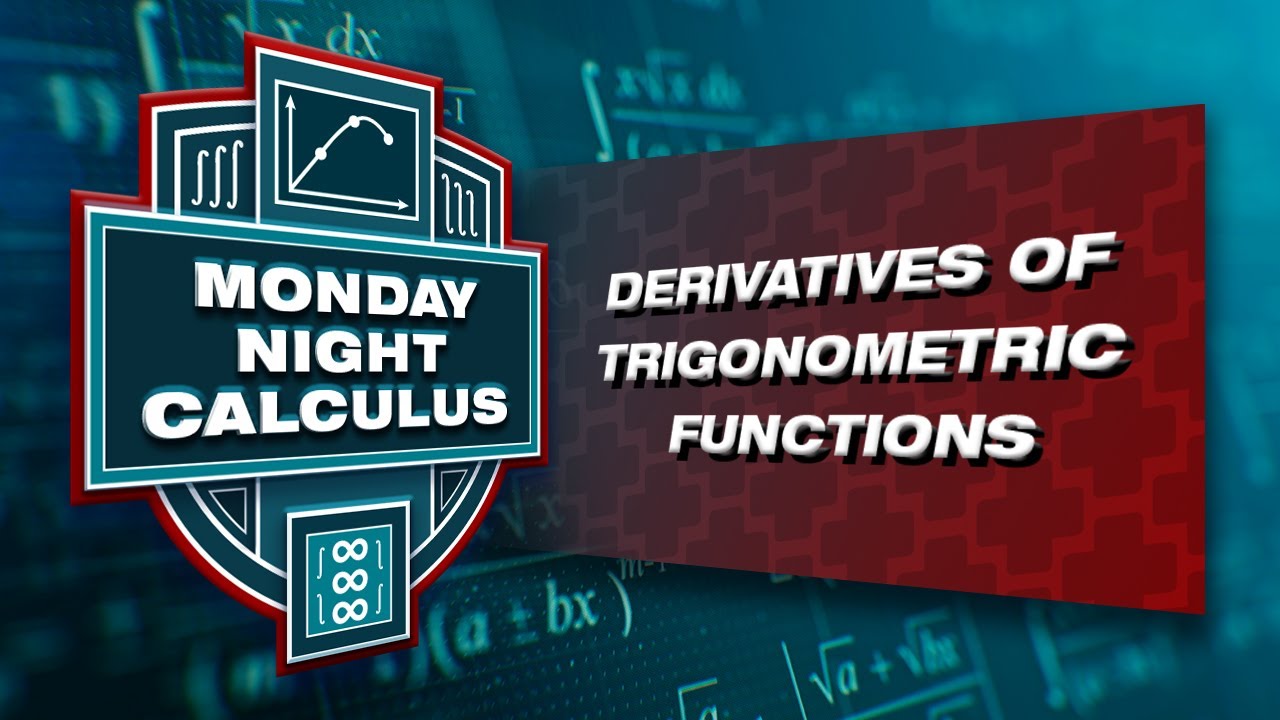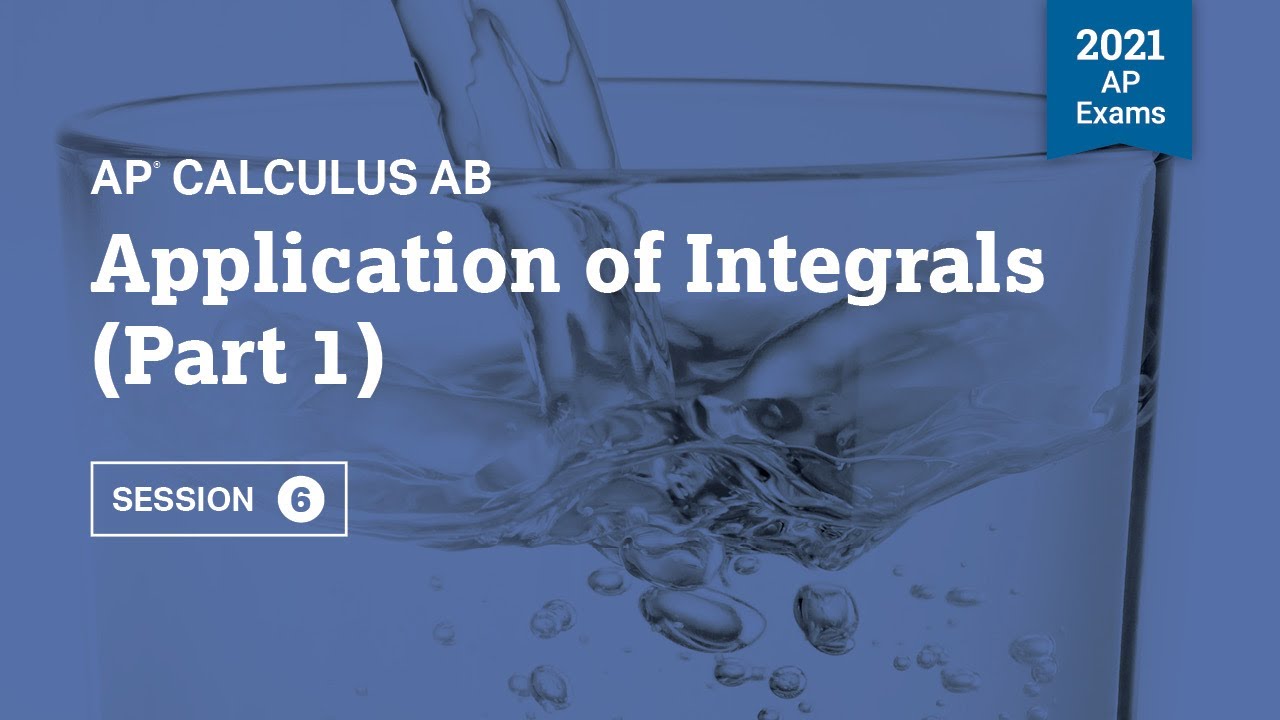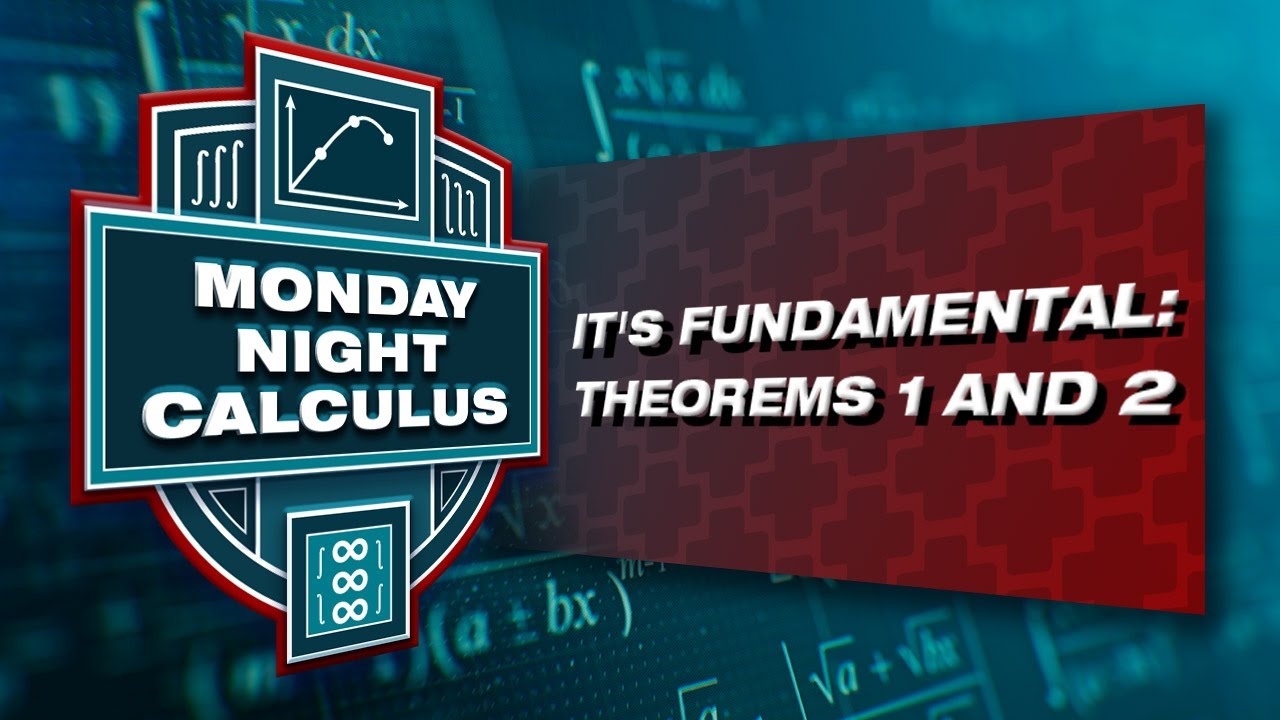2021 Live Review 2 | AP Calculus AB | Contextual & Analytical Applications of the Derivative
TLDRIn this engaging video script, the hosts delve into the applications of derivatives in calculus, focusing on topics such as tangent line approximations, related rates, and the behavior of functions as indicated by the first and second derivatives. They discuss the concept of inverse functions and how to find the derivative of a composite function, particularly emphasizing the use of the chain rule. The hosts also explore the derivatives of inverse trigonometric functions, providing a detailed example involving the inverse sine function. Practical examples, including the velocity and acceleration of a particle, are used to illustrate the concepts, and the importance of unit reconciliation in calculus is highlighted. The session is interactive, with references to audience participation and the use of visual aids such as PowerPoint and overhead projections. The hosts also stress the importance of reading comprehension in understanding calculus problems and provide insights into effective test-taking strategies, including the use of unique mistakes to improve. The script concludes with a reminder about the structure of the AP exam and a teaser for upcoming content on limits and continuity.
Takeaways
- 📚 **Practice of Derivatives**: The session focused on practicing various applications of derivatives, including tangent line approximations, related rates, and contextual applications.
- 🔢 **Inverse Functions and Derivatives**: It was discussed how to find the derivative of an inverse function using the concept of reciprocals, without necessarily involving perpendicularity.
- 📈 **Derivatives and Rates of Change**: The importance of understanding how derivatives represent rates of change, such as in the context of velocity and acceleration, was emphasized.
- 🧮 **Calculator Active Problems**: For complex functions, the use of a calculator is not only allowed but necessary, and the session included examples of how to use a calculator effectively.
- 📉 **Decreasing Functions**: The concept of determining intervals where a function is decreasing was covered, using the derivative of the function.
- 📈📉 **Interpreting Derivatives**: Interpreting the meaning of the first and second derivatives in terms of a function's behavior was discussed, including concavity.
- ⏱️ **Related Rates**: A specific problem-solving technique for related rates was demonstrated, showing how to differentiate with respect to a variable not explicitly present in the equation.
- 📏 **Tangent Line Approximations**: The method for using the equation of a tangent line to approximate function values was practiced, highlighting the need for correct units and interpretation.
- 🔑 **Key Concept of Rate**: The rate in calculus, particularly in the context of a container of hot chocolate being emptied, was used to demonstrate the application of derivatives in real-world scenarios.
- 📘 **Reading and Understanding**: The necessity of strong reading skills for comprehension and attention to detail in calculus problems was highlighted.
- 📋 **Units and Reconciliation**: The importance of using units to check the validity of answers and ensuring they make sense in the context of the problem was discussed.
Q & A
What is the main topic discussed in the video?
-The main topic discussed in the video is the application of derivatives in calculus, including tangent line approximations, related rates, and the behavior of functions as indicated by the first and second derivatives.
What is the significance of understanding the first and second derivatives of a function?
-The first derivative of a function indicates the rate of change or the slope of the tangent line to the function's graph, while the second derivative can indicate concavity and points of inflection, which are important for understanding the function's overall behavior.
How does the concept of inverse functions relate to the problem involving the function h and k?
-The concept of inverse functions is used to find the value of k'(0) in the problem. Since k and h are inverse functions, knowing that h(x) would have the companion point of (x, 0) helps in determining that k'(0) is the reciprocal of h'(-0.5), which is given as 2.
What is the purpose of the warm-up problem involving the function h and k?
-The warm-up problem is designed to practice the concept of derivatives, specifically the application of the chain rule and the understanding of inverse functions to find the value of k'(0).
Why is it important to practice both analytical and contextual applications of derivatives?
-Practicing both types of applications helps students to understand the broader implications of derivatives in various fields and real-world scenarios, while also solidifying their grasp on the mathematical concepts.
How does the video address the topic of tangent line approximations?
-The video addresses tangent line approximations by showing how to use the equation of a tangent line at a given point to approximate the value of a function at a nearby point. It demonstrates the process using a specific example involving the function h(x) = x + 3e^(x-4).
What is the relevance of the chain rule in differentiating composite functions?
-The chain rule is crucial when differentiating composite functions, as it allows students to break down the differentiation process into simpler steps by differentiating the inner function and then multiplying by the derivative of the outer function.
Why is it recommended to cover up the answer choices while solving multiple-choice problems?
-Covering up the answer choices helps prevent the temptation to be influenced by them, which can lead to careless mistakes. It encourages students to focus on solving the problem correctly and then confidently select the answer they've determined.
How does the video use the concept of related rates to solve a problem involving the variables m and v?
-The video demonstrates a related rates problem by differentiating an equation involving m and v with respect to time t. It shows how to find dm/dt when given dv/dt and the value of v at a specific instant.
What is the strategy for determining intervals where a function is decreasing based on its derivative?
-The strategy involves setting the derivative less than or equal to zero and solving for the intervals where this condition is met. This indicates where the original function is decreasing.
Why is it suggested to practice with a specific method or formula for the two weeks leading up to an exam?
-Practicing with a specific method or formula consistently helps reinforce the process and makes it easier to apply during the exam. Trying to learn a new method right before the exam can lead to confusion and reduce the chances of correctly applying it under pressure.
Outlines
😀 Introduction and Review of Derivative Applications
The video begins with a live session where the host warmly welcomes viewers back for day two of a calculus review. The focus is on practicing applications of derivatives, revisiting some unfinished topics from the previous day. The host encourages viewers to stay tuned for various applications, such as tangent line approximations, multiple-choice and free-response rates, and related rates. The conversation also touches on the analytic applications of derivatives, including understanding the behavior of functions through the first and second derivatives. A warm-up problem involving inverse functions is introduced, and the host apologizes for the late upload of the day two handout.
📚 Derivatives of Inverse Functions and Example Problem Walkthrough
The speaker discusses derivatives of inverse functions, providing an example problem where they find the value of a derivative at a specific point. The problem involves understanding the relationship between two inverse functions and applying the chain rule. The host recalls a previous discussion about the slope of the tangent line and the reciprocal relationship between derivatives of inverse functions. A student's innovative approach to solving the problem by hand is praised, and the feedback form is mentioned as a way to provide input for the live teaching sessions.
🔍 Analyzing the Tangent Line Approximation Problem
The host delves into a problem involving the use of the tangent line to approximate a function's value. They explain the need for both a slope (derivative) and a point to determine the tangent line. The process involves differentiating the given function and using the result to approximate the function's value at a specific point. The host emphasizes the importance of taking the derivative as a first step in many calculus problems and shares a tip about covering up answer choices to avoid distraction and potential mistakes.
🔢 Solving a Related Rates Problem with Algebraic Manipulation
The video continues with a related rates problem, where the relationship between two variables is given by an equation, and the derivative with respect to a third variable is needed. The host demonstrates how to differentiate the equation with respect to time and substitute given values to find an unknown rate. They highlight the importance of algebraic manipulation and early substitution of known values in the problem-solving process.
📈 Graphical Interpretation of Derivatives and Decreasing Functions
The host addresses a problem that requires the interpretation of a graphical representation of a derivative. They explain how to determine intervals where a function is decreasing by analyzing the sign of the derivative. The discussion includes a clarification about the relationship between the first derivative, the sign of the derivative, and the increasing or decreasing nature of the function.
🧮 Calculator-Active Problems and Solving for Velocity and Acceleration
The host introduces a calculator-active problem involving the velocity of a particle moving along the x-axis. They demonstrate how to use a calculator to find the velocity at a specific time and then find the derivative to determine acceleration. The host emphasizes the importance of understanding the relationship between velocity, acceleration, and speed, and how they can be analyzed using calculus.
📊 Using Graphs to Determine Speed and Acceleration
The host discusses an alternative method for finding the derivative at a specific point using a graph. They mention different ways to input values and calculate derivatives on a calculator. The conversation shifts to the interpretation of a velocity graph and how it can be used to determine if the speed of a particle is increasing or decreasing. The host also touches on the importance of translating graphical observations into calculus terms for free-response questions.
📋 Free Response Question: Hot Chocolate Dispensation Rate
The host presents a free-response question involving a table of values that represent the rate at which hot chocolate is being removed from a container over time. They demonstrate how to approximate the derivative at a specific time using the given data points and explain the significance of the derivative in the context of the problem. The host emphasizes the importance of units and their correct interpretation in the answer.
🚴♂️ Calculating Acceleration Using a Velocity Function
The host solves a problem involving a function that models the velocity of a person riding a bike. They find the acceleration at a specific time by differentiating the velocity function and evaluating it at the given time. The host discusses the importance of showing the setup on a calculator and the correct presentation of the final answer, including units.
📐 Rate of Change of Distance Between Two Functions
The host tackles a problem that asks for the rate of change of the distance between two functions at a specific point. They differentiate the absolute value of the difference between the two functions and evaluate it at the given point. The host emphasizes the importance of understanding the context of the problem and the correct interpretation of the derivative.
📝 Final Thoughts and Upcoming Topics
The host concludes the session with a summary of the day's activities, emphasizing the importance of reading carefully and understanding the context of calculus problems. They also discuss the importance of unit reconciliation and the accuracy of the final answer. The host teases upcoming topics, including limits and continuity, and thanks the viewers for their time and participation.
Mindmap
Keywords
💡Derivative
💡Tangent Line Approximation
💡Related Rates
💡Inverse Functions
💡Chain Rule
💡Contextual Application
💡Multiple Choice and Free Response
💡Graph of a Function
💡Acceleration
💡Units of Measure
💡Reading Comprehension
Highlights
Day two of the calculus review focuses on applications of derivatives, including tangent line approximations, rates, and related rates.
Review of previous day's content, particularly on inverse functions and their relationship to derivatives.
Introduction of a warm-up problem involving the derivative of an inverse function to find the value of a function at a specific point.
Discussion on the importance of understanding the behavior of functions through the first and second derivatives.
Practical application of derivatives in contextual problems, such as analyzing rates and related rates.
Use of the chain rule in calculus to solve for the derivative of a composite function.
Explanation of how to approximate values using the tangent line equation in the context of a function.
Differentiation with respect to a variable not explicitly present in the equation, a technique used in related rates problems.
The concept of speed and velocity and how their relationship can be understood through derivatives.
Graphical representation of derivatives and how to interpret the behavior of a function from its derivative's graph.
Emphasis on the importance of algebraic skills in calculus, especially when differentiating implicitly.
Tips for solving multiple-choice and free-response questions effectively, including the use of unique mistakes for self-correction.
Guidelines for using a calculator in solving calculus problems, including when and how to use it for derivative and integral calculations.
Explanation of how to find the instantaneous rate of change using the concept of average rate of change from a data table.
Approach to solving a free-response question involving the rate of change of the distance between two functions.
The necessity of reading comprehension in calculus, as it is crucial for understanding problems and deriving solutions.
Advice on presenting answers in a clear and precise manner, including the importance of units and significant figures.
Discussion on the structure and expectations of the AP Calculus exam, including the timing and types of questions.
Transcripts
Browse More Related Video

2021 Live Review 3 | AP Calculus BC | Everything You Need to Know About Parametrics

AP Calculus AB and BC Unit 3 Review [Differentiation: Composite, Implicit, and Inverse Functions]

Monday Night Calculus: Derivatives of Trigonometric Functions

Calculus - Find the derivative of inverse trigonometric functions

2021 Live Review 6 | AP Calculus AB | Application of Integrals (Part 1)

Fall 2023 MNC: It's fundamental - Exploring FTC 1 & 2
5.0 / 5 (0 votes)
Thanks for rating: